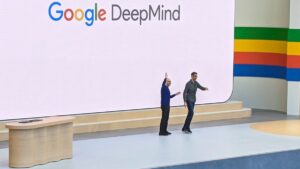DeepMind to Utilize AI Models for Enhancing Physical Robots

Google DeepMind Launches New AI Models for Robotics
In a significant development on Wednesday, Google DeepMind introduced two cutting-edge AI models specifically designed for robotics, both powered by its latest technology, Gemini 2.0. This new suite of tools represents Google’s most advanced AI capabilities to date.
New AI Models: Gemini Robotics and Gemini Robotics-ER
Google unveiled the Gemini Robotics and Gemini Robotics-ER (Extended Reasoning) models, which aim to enhance the way robots interact with the physical world. Unlike previous generative AI, which primarily focuses on creating, processing, and understanding text and images, these new models enable robots to perform physical tasks through precise action commands.
Partnership with Apptronik
To bring these innovations to life, Google is teaming up with Apptronik, a Texas-based company that specializes in humanoid robotics. Apptronik has a history of collaboration with high-profile organizations such as Nvidia and NASA. Recently, Google took part in a $350 million funding round to support Apptronik, illustrating its commitment to advancing humanoid robotics using Gemini 2.0 technology.
Demonstration of Capabilities
In recently released demonstration videos, robots equipped with Gemini models showcased their abilities by executing tasks such as:
- Plugging devices into power outlets
- Filling lunchboxes
- Organizing plastic vegetables
- Zipping bags
These tasks were accomplished in response to spoken commands, illustrating the potential for AI-enhanced robots to function efficiently in everyday scenarios.
Essential Qualities for Robotics AI
Google outlined three essential qualities for AI models in robotics to be effective and beneficial:
General Adaptability: The AI should be versatile enough to adapt to different situations and environments.
Interactivity: Robots must be capable of quickly understanding and responding to instructions or changes in their surroundings.
- Dexterity: The AI should enable robots to perform tasks typically done by humans, using fine motor skills to manipulate objects with precision.
Gemini Robotics-ER, specifically designed for developers and researchers, is available to Apptronik and a select group of other “trusted testers” such as Agility Robotics, Boston Dynamics, and others. This access will allow these organizations to train their own AI models based on Gemini’s advanced framework.
Competitive Landscape in Robotics AI
Google is not the only company focusing on integrating AI into robotics. In November, OpenAI invested in Physical Intelligence, a startup dedicated to creating general-purpose AI systems that can power robots in the real world. Alongside this initiative, OpenAI also made leadership changes by hiring the previous head of Meta’s Orion project to bolster its robotics efforts.
Moreover, Tesla is actively developing its humanoid robot, known as Optimus, highlighting the increasing importance of AI-driven robotics across various industries.
Insights from Google’s CEO
Google’s CEO, Sundar Pichai, expressed the company’s vision of robotics serving as a practical testing ground for applying AI technologies in real-life scenarios. He mentioned that the robots would utilize Google’s multimodal AI capabilities to adjust and adapt in real time, responding dynamically to their surroundings.
This venture marks a notable step forward in the intersection of AI and robotics, opening up exciting possibilities for how technology can aid in everyday tasks while enhancing human-robot collaboration. As they continue to refine these technologies, we can anticipate further developments in the field of robotics powered by AI.





